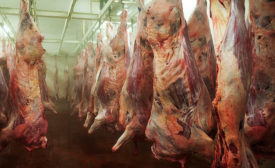Meat and Poultry Processing
Tech | Processing
How to withstand the grind
Processors that grind and stuff meat and poultry face unique food-safety challenges, but astute operators can reduce the threats.
Read More
Tech | Meat Science
Spray chilling beef sides can hasten temperature decline during postmortem chilling
January 20, 2021
Tech | Packaging
The future of deli trays
Thermoformed trays may take a leap forward in 2021.
Read More
Tech | Ingredients
A simpler, cleaner marinade
The shift toward clean labels requires fewer but more effective ingredients.
Read More
Snacking movement gains momentum
Shoppers' increasing interest in snacks presents expansion opportunities.
Read More
2021 Poultry Report: poultry prospers during the pandemic
Ground turkey and chicken dark meat do particularly well as consumers turn to dining at home.
Read More
Podcast
MeatsPad podcast with Dr. David Gerrard, Virginia Tech
Dr. Gerrard, department head of the Department of Animal and Poultry Sciences, discusses the factors that determine meat taste, tenderness and quality.
December 23, 2020
Stay ahead of the curve. Unlock a dose of cutting-edge insights.
Receive our premium content directly to your inbox.
SIGN-UP TODAYCopyright ©2024. All Rights Reserved BNP Media.
Design, CMS, Hosting & Web Development :: ePublishing













